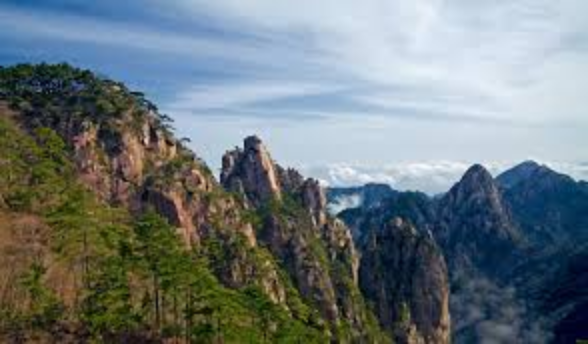
What is the highest peak in the Yellow Mountains?
Lotus Peak: The Crown Jewel of the Yellow Mountains
The Yellow Mountains, or Huangshan in Chinese, are a mountain range in southern Anhui province in eastern China. The area is well known for its scenery, sunsets, peculiarly-shaped granite peaks, hot springs, winter snow, and views of the clouds from above. The Yellow Mountains are a frequent subject of traditional Chinese paintings and literature, as well as modern photography. In 1990, the area was declared a UNESCO World Heritage Site.
Among these magnificent peaks, Lotus Peak, also known as Lianhua Feng (莲花峰), stands as the tallest, reaching an elevation of 6,106 feet (1,864 meters) above sea level. This towering peak represents the highest point in the entire Yellow Mountain range and offers breathtaking panoramic views of the surrounding landscapes.
Vegetation Zones of the Yellow Mountains
The vegetation of the Yellow Mountains varies significantly with altitude, creating distinct ecological zones:
| Elevation Range | Vegetation Type | Characteristics |
|---|---|---|
| Below 3,600 feet (1,100 m) | Mesic Forest |
|
| 3,600 - 5,905 feet (1,100 - 1,800 m) | Deciduous Forest |
|
| Above 5,905 feet (1,800 m) | Alpine Meadow |
|
Climbing Lotus Peak: A Rewarding Challenge
Ascending to the summit of Lotus Peak is a challenging yet rewarding experience. The climb typically takes several hours and involves navigating steep stone steps, narrow ridges, and exposed sections. However, the panoramic views from the top, encompassing the jagged peaks, verdant valleys, and swirling clouds, make the arduous journey worthwhile.
The climb to Lotus Peak is not for the faint of heart, but it's an unforgettable experience for adventurous souls seeking to conquer one of China's most iconic mountains.
FAQs
What is the significance of the Lotus Peak in Chinese culture?
Lotus Peak holds cultural and spiritual significance in Chinese tradition. The lotus flower, which the peak is named after, symbolizes purity, enlightenment, and rebirth in Buddhism. The peak is often associated with spiritual journeys and the pursuit of enlightenment.
When is the best time to climb Lotus Peak?
The best time to climb Lotus Peak is during the spring (April-May) and autumn (September-October) when the weather is mild and sunny, offering clear views. Summer can be hot and humid, while winter brings snow and ice, making the climb more challenging and potentially dangerous.
Are there any accommodations available near Lotus Peak?
Yes, there are hotels and guesthouses available within the Yellow Mountain Scenic Area, providing accommodation for visitors who wish to stay overnight and explore the mountains over multiple days. It's recommended to book accommodation in advance, especially during peak season.